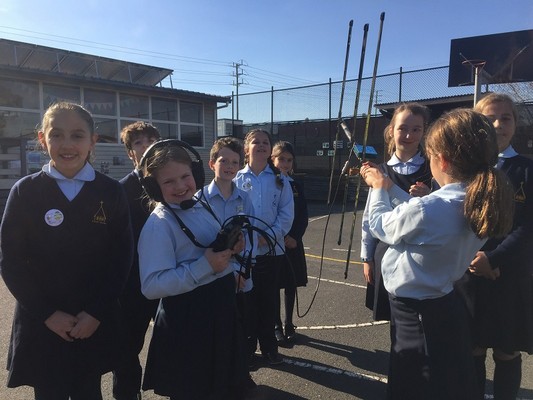Radio Frequency Interference Hunt
Introduction
We all know about air pollution and water pollution and the problems they cause, but what about Radio Frequency (RF) pollution? Just because we can't see Radio Frequency Interference (RFI) does not mean that it isn't a problem, especially if you are trying to use the airwaves for a radio contact during school lunchtimes.
RFI can be caused by any electrical or electronic device. For example: Whenever a switch is pressed, the change in electrical current flowing through the circuit creates radio waves, which can be heard on a nearby receiver. It sounds like a loud click in the speaker. Some devices like TVs, computers, motors and AC adapters emit RFI continuously and not just on one frequency: They can be heard over a large spectrum of radio frequencies and they sound like a loud and very annoying buzzing sound in the receiver. Some interfering sources are louder than others and the closer they are, the very much louder they get. There are some ways to reduce or eliminate RFI from the source or from the receiver. Sometimes the only way to have a successful contact at home or at school is to see if you can find the source of RFI and switch it off. The first trick in eliminating RFI is always to know where it is coming from.
This activity is all about detecting and tracking down the sources of RFI in your home or school. You will be amazed at some of the home appliances which cause the most problems. At school, we can predict from experience that the greatest source of RFI is usually the school office, due to all the computers, photocopiers and other gadgets they have in there. WARNING: Do not enter the school office - There be dragons!
Preparation
- You will need a portable shortwave receiver if you want to locate RFI on Amateur Radio bands, but you can use an AM broadcast band receiver for general application.
- An optional directional antenna will help you locate the direction of the interference. Without it you have to move the receiver around and keep heading to where the RFI is loudest.
Activity
- Set up your receiver and antenna.
- Take it in turns to tune around to find a loud source of RFI. Note: Some sources change frequency, so you have to keep tracking where they go.
- Move the receiver around or use the directional antenna to find the source of the interference.
- To confirm that what you think it is actually the source of RFI, turn the device off and on again. IMPORTANT: You must seek permission from an adult to turn any device off and on, otherwise you could damage the equipment, loose sensitive data or interrupt an essential process. Better still, ask a responsible adult to turn the device off and on for you.
- In the picture below, the SARC team has discovered a major souce of RFI coming from the nearby high voltage power lines outside the school. The interference is caused by small electrical discharges across the ceramic insulators that hold up the wires. The problem is that the insulators sometimes get dusty. The interference might even be reduced after the next rainy day.

Homework
- Use an AM broadcast radio to search for RFI around the home.
- Work out a way to compare different sources of RFI, like how loud they are at 1 metre from the source.
- Make a list of the RFI sources in order strength.

